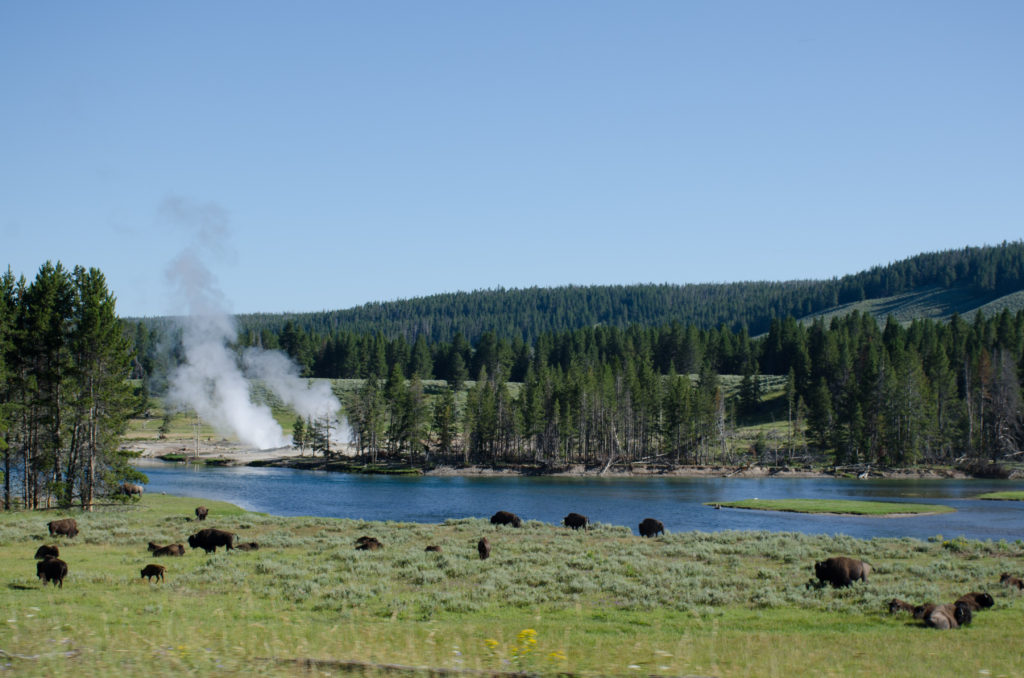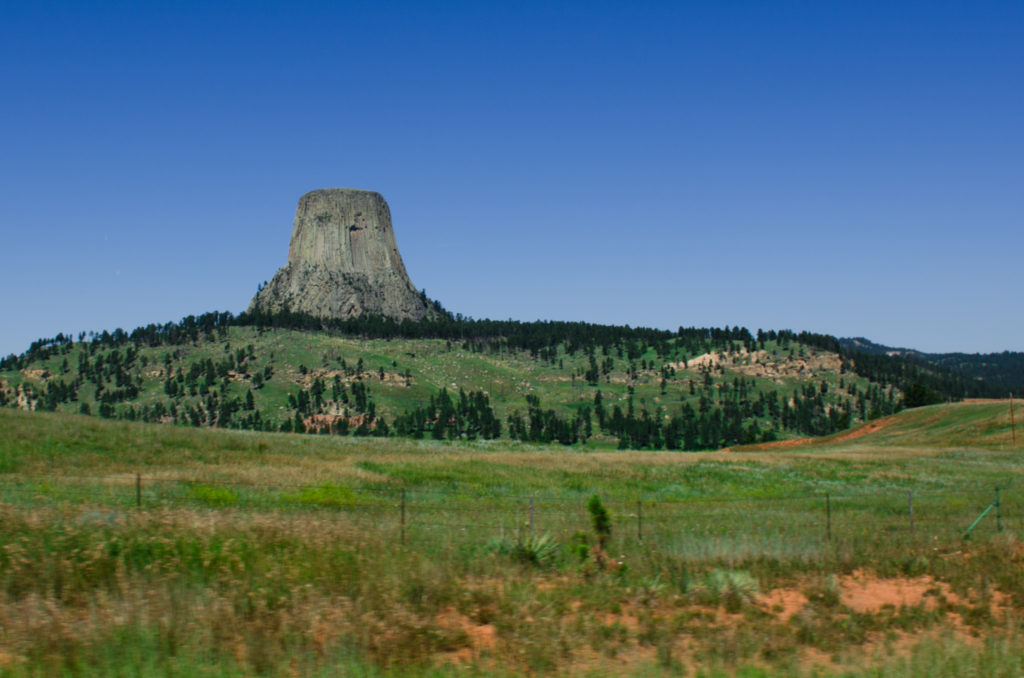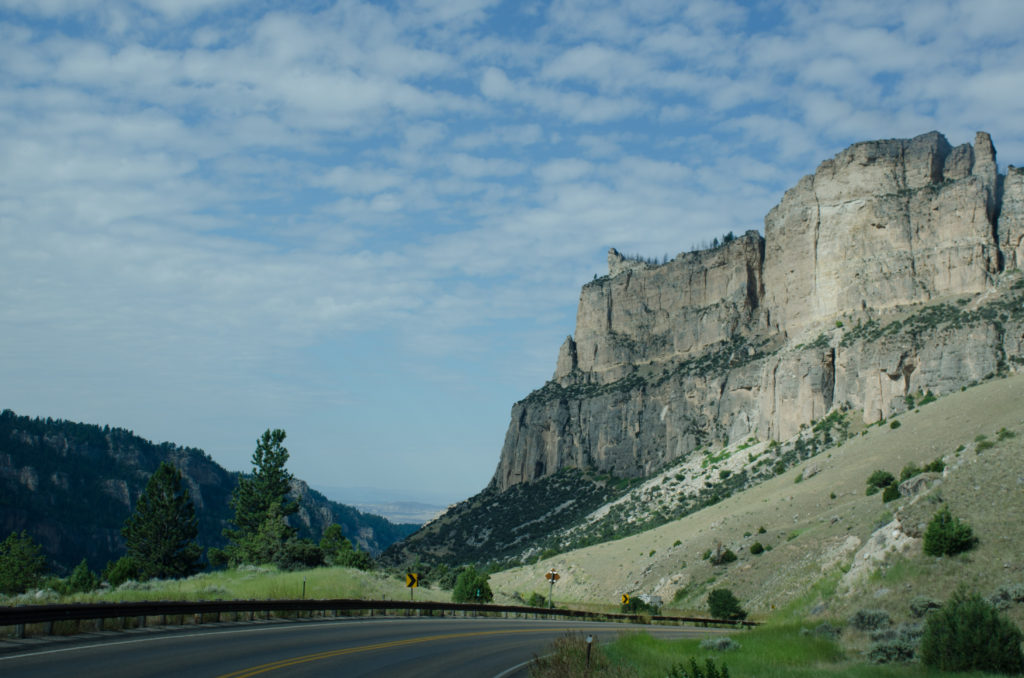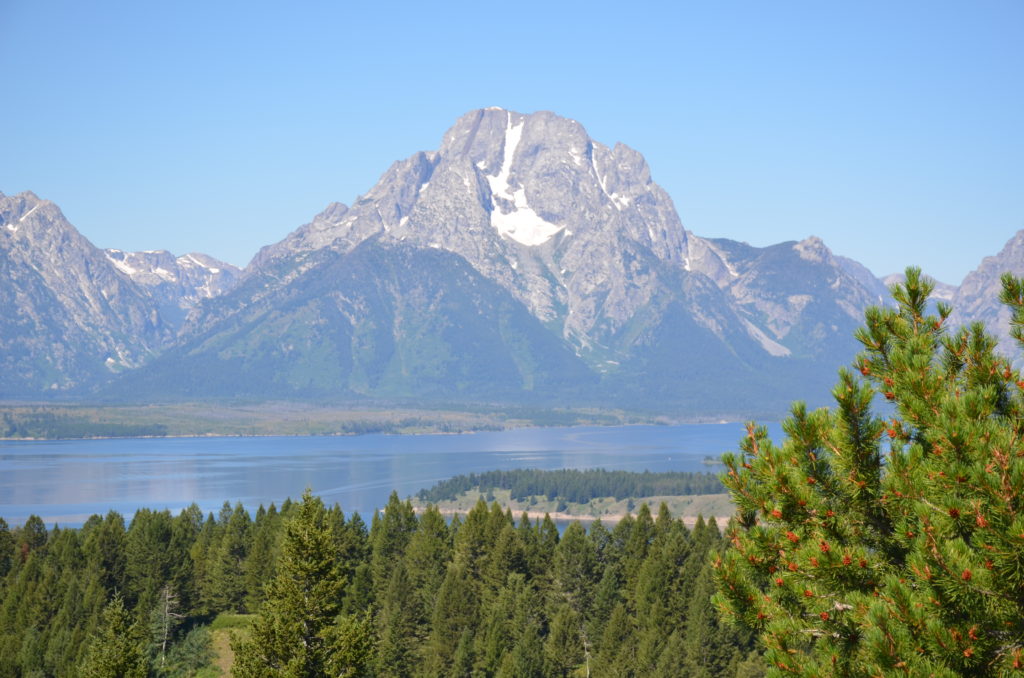Yellowstone
I think the striking thing about Yellowstone is not so much the range of geothermal features on display within the parks boundaries, but rather the way these appear dotted within an ‘ordinary’ landscape. An admittedly attractive though not startling backdrop, ends up highlighting the ridiculousness of the mud pools, geysers, hot strings and travertine terraces.
Beneath your feet rolls a gigantic super-volcano ready to unleash forces and debris thousands of times the size of the Mt St Helens eruption.
Yet at the surface the forests grow, the rivers flow, the buffalo graze and the earth gently steams, bubbles and gurgles away
The sulphur hot spring flows with its coloured bacteria Thermopylae into the brook and quickly the effect dissipates and the scene returns to a bucolic normal.

Grand Tetons
The ‘little brother’ park to Yellowstone is sandwiched between the energetic town of Jackson to the south and it’s larger, better known neighbor park to the north.
The topography calms here, taking on the feel of an alpine lake flanked by pinnacle mountains. Those pinnacles reflect the young age of the Tetons, born of fault line movement only 10 million years ago and shaped by repeated ice ages since.
Rectangular Geology

When you look at a state based map of the US, Wyoming is a nondescript rectangle sitting between the Great Lakes and Pacific Coast. There is nothing to warrant further investigation, not even a chink in its rectangular shape.
Arrive here and it is a striking procession of one geological oddity after another. An ever changing landscape, that keeps providing the next ‘wow’ moment.
In the east, the Black Hills with their open ponderosa pine forests, spill over from South Dakota delivering you to the open farm land around Sundance and Gillette. But no, there has to be an anomaly, a ‘what on earth’ feature. In the north east corner of the state that is provided by the Devils Tower, a volcanic butte pushing 867 feet (265 m) above the surrounding hills.
Travel a little further west and you have the coal fields around the Powder River, strange miniature pockets of industrialization.
Then the Big Horn mountains come into view. Really an uplifted plateau with deep gullies and canyons on either flank , some dense with forest, then topped alpine meadows.
Run down the western slope and you are greeted by weathered sandstone mesas akin to the Badlands. Gullies run hither and thither, disorientating in their complexity.
Continue through the farming flats of Greybull and Cody, exit the route 14 tunnel to find busy streams, tree-lined banks and steep, eroded canyon walls.
And there’s still 50 miles to go to the Yellowstone entry gate and the park’s wonders.

